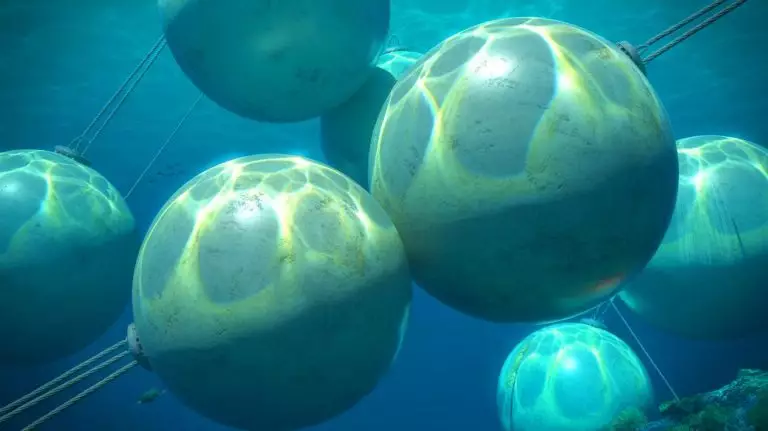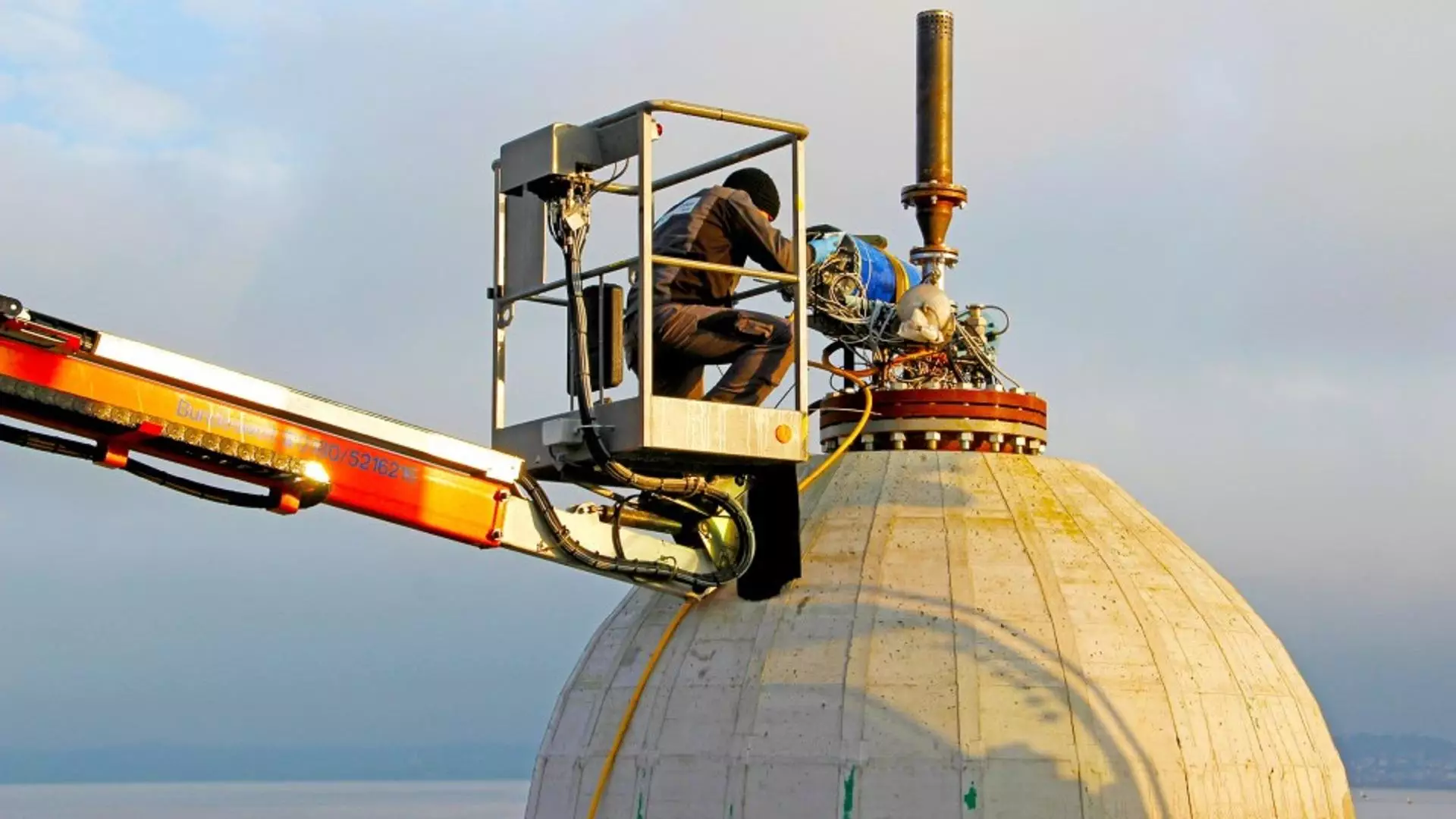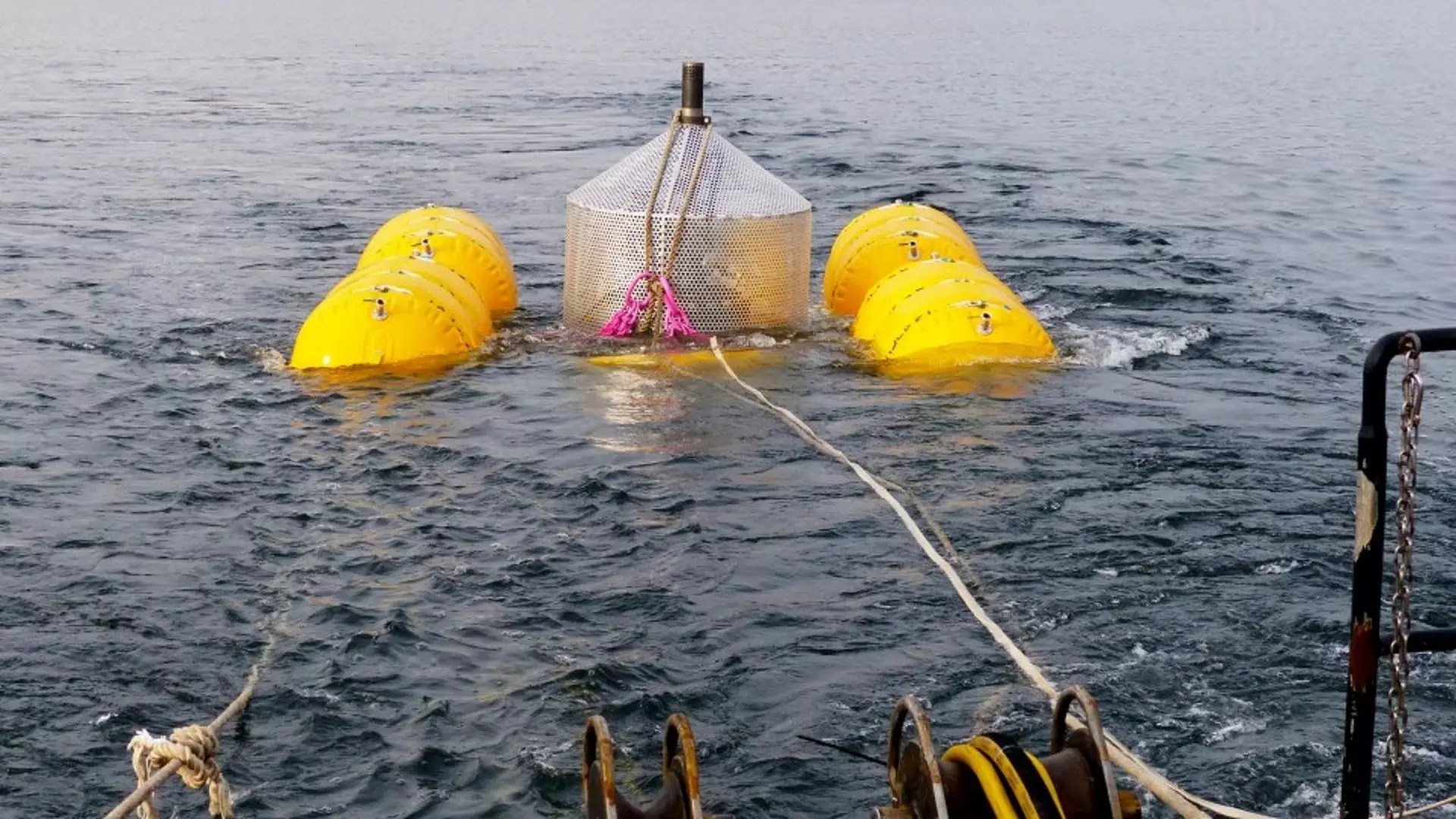| IN A NUTSHELL |
|
In the quest for sustainable energy solutions, researchers are diving deep into the oceans to unlock new potential. The innovative concept of using underwater concrete spheres to store renewable energy is gaining attention. This groundbreaking idea not only promises to enhance energy storage capabilities but also reduces the reliance on land-based infrastructure. As the world grapples with the increasing demand for renewable energy, these concrete spheres might hold the key to a cleaner and more efficient future.
The Science Behind Concrete Spheres
The idea of storing energy beneath the waves is nothing short of revolutionary. At the heart of this concept lies the StEnSea (Stored Energy in the Sea) project, spearheaded by Germany’s Fraunhofer Institute. The project explores how the natural pressure of the ocean depths can be harnessed to store energy. Each hollow concrete sphere acts as a storage unit. When energy is needed, a valve opens, allowing seawater to flow in and drive a turbine, which generates electricity. To recharge, water is pumped out using grid energy, readying the sphere for another cycle.
These spheres are not small. Measuring about 30 feet in diameter and weighing 400 tons, they are designed to be anchored at depths of 1,970 to 2,625 feet. These depths are optimal for efficiency, as the pressure is sufficient to store and release significant amounts of energy. Initial tests in Europe’s Lake Constance have proven successful, leading to plans for a prototype off the coast of Long Beach, California. This prototype is expected to store enough energy to power an average U.S. household for roughly two weeks, showcasing the potential scale of this technology.
Transforming Global Energy Storage
Fraunhofer’s estimates suggest that the global energy storage capacity of these spheres could be monumental, potentially reaching around 817,000 gigawatt-hours. Such capacity could power 75 million homes across Germany, France, and the UK for a year. With storage costs projected at about 5.1 cents per kilowatt-hour, the economic feasibility of this technology is promising. The initial investment is estimated at $177 per kilowatt-hour of capacity, based on a storage park model with six spheres.
Beyond just storage, these spheres offer benefits like grid stabilization through frequency regulation and operating reserves. They also facilitate energy arbitrage, buying electricity when it’s cheap and selling it during peak prices. This flexibility is invaluable in modern energy markets, where demand can be unpredictable. Unlike traditional energy storage methods like pumped hydro, which require specific geographical features, the underwater spheres can be deployed globally, unlocking vast storage potential without occupying valuable land.
Comparing with Traditional Methods
Traditional energy storage methods, such as pumped hydro, rely on geographical features like two reservoirs at different elevations. While effective, they are limited by location and land use. In contrast, the StEnSea system can be deployed in diverse marine environments worldwide, offering significant advantages in scalability and flexibility. Although pumped storage remains more efficient and cost-effective, the StEnSea spheres’ versatility could make them a critical component in future energy grids.
Importantly, these spheres also address the growing challenge of renewable energy integration. As solar and wind power become more prevalent, energy storage technologies like StEnSea offer a way to balance supply and demand, ensuring a steady energy supply even when production fluctuates. This capability is crucial for transitioning to a more sustainable energy landscape, where reliance on fossil fuels is minimized.
The Road Ahead for Underwater Energy Storage
As the Fraunhofer Institute prepares for the deployment of its full-scale prototype in California, the world watches with anticipation. This project represents not just a technological innovation but a new chapter in renewable energy storage. The ability to store excess energy generated during peak production times and release it when needed could revolutionize how we think about energy storage.
However, challenges remain. Ensuring the durability and reliability of these spheres in harsh underwater environments is crucial. Moreover, the economic implications of scaling this technology need to be carefully considered. Yet, the potential benefits are significant, offering a cleaner, more efficient way to store renewable energy.
As we look to the future, the question remains: Can these underwater concrete spheres become a cornerstone of our global energy infrastructure, providing a sustainable solution to our ever-growing energy needs?
Did you like it? 4.6/5 (25)









Wow, this is an incredible innovation! How soon can we expect to see these spheres in action worldwide? 🌍
Sounds cool, but what happens if there’s an underwater earthquake? 🤔
Why concrete spheres? Couldn’t they use another material that’s maybe more eco-friendly?
This sounds like something out of a sci-fi movie. Can’t wait to see it in reality!
Are there any potential environmental impacts of deploying these spheres?
So, are these spheres supposed to be maintenance-free, or will they require regular check-ups?
Interesting, but the deep-sea environment presents significant engineering and maintenance challenges compared to established pumped hydro solutions.
I love the idea, but won’t the construction of these spheres be super expensive? 💸
Imagine a giant ball pit at the bottom of the ocean! 😂
How does this compare to traditional battery storage in terms of cost and efficiency?
Does anyone else think we should focus on land-based solutions first? 🤨
If deployed on a large scale, would sea level rise be a concern? Is water displacement a factor if deployed in the massive numbers i assume would be required. Would the constant filling and pumping the seawater amplify wave action to any degree? What are the ripple effects…